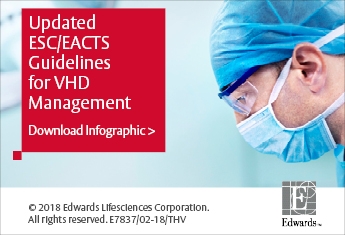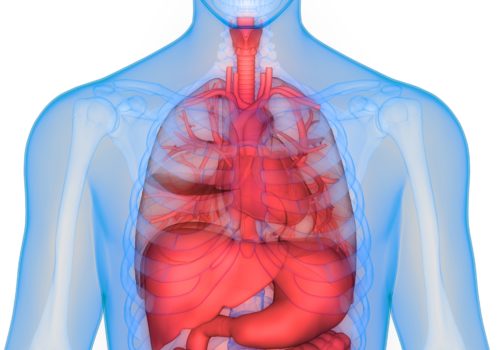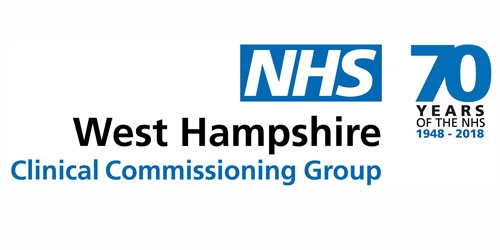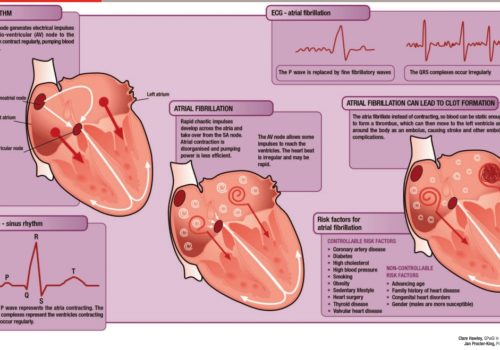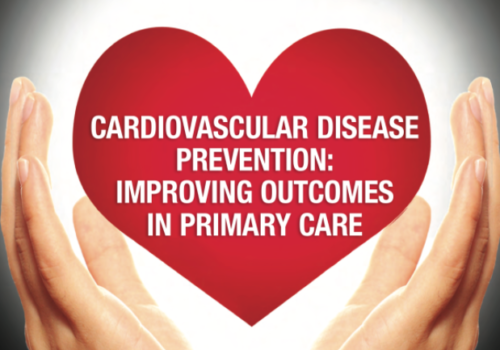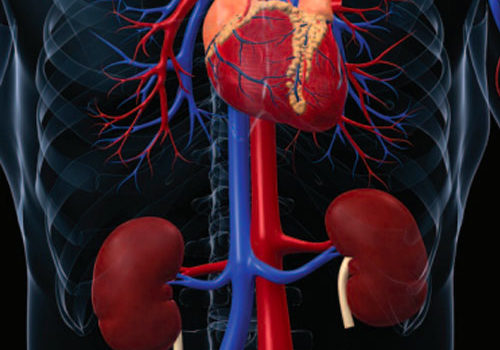This article provides a pragmatic approach for primary care following NICE’s update to their guidance on identification and management of familial hypercholesterolaemia (CG 71) published in November 2017.
The 2017 ESC/EACTS Guidelines For VHD management
ESC/EACTS guidelines for Valvular Heart Disease (VHD) management were updated in 2017 and has since impacted individual patient suitability for Aortic Stenosis treatment. A visual summary of the latest VHD management guidelines is now available. Download yours now!
CVD prevention opportunities here and now
Cardiovascular disease is a much more preventable issue than many healthcare professionals realise. Medical advances, together with reduced premature mortality from CVD and increased life expectancy, means that on top of the demands of an ageing population we are also living ‘less-well’ for longer, and creating a different kind of pressure on services.
Heart Failure: A syndrome of comorbidity
Heart failure (HF) is a devastating clinical syndrome characterised by a constellation of symptoms and signs in the presence of reduced cardiac function. Comorbidity is almost inherent as HF is often the culmination of chronic disease processes such as ischaemic heart disease, hypertension and valve disease and its treatment may precipitate comorbidities such as gout, erectile dysfunction (ED) and acute kidney injury (AKI).
Case study: Optimising detection and stroke prevention in patients with atrial fibrillation
In 2015 West Hampshire CCG (WHCCG) recognised that there was a significant burden of undiagnosed atrial fibrillation (AF), which was resulting in an excess of preventable strokes. This could be improved by the prescription of anticoagulation in those at increased risk.
Back to Basics: What goes wrong in atrial fibrillation?
Atrial fibrillation (AF) is the commonest sustained cardiac dysrhythmia, and an important risk factor for stroke and systemic thromboembolic events. This wall chart outlines AF risk factors, and compares AF with normal heart rhythm.
Cardiovascular disease prevention: Improving outcomes in primary care
Cardiovascular disease (CVD) remains a significant cause of disability and death in the UK, and it is also a key driver of health inequalities. The burden of CVD is set to grow substantially with the ageing population and increasing prevalence of overweight and obesity. So It’s time to get serious about prevention, both through population-level […]
NHS Right Care: Improvement at scale and pace
NHS RightCare is a national NHS England-supported programme helping to ensure that the best possible care is delivered as efficiently as possible, and that this care is right for patients and will help ensure a sustainable NHS, now and for the future.
Cholesterol and cardiovascular risk
Raised blood cholesterol is a major risk factor in developing coronary heart disease and other cardiovascular diseases. Effective and well-tolerated lipid-lowering treatment improves outcomes for patients with elevated cholesterol, especially those with familial hypercholesterolaemia.
Chronic kidney disease and cardiovascular risk
This article seeks to demonstrate the close relationship between cardiovascular disease and chronic kidney disease (CKD). It also highlights the importance of identifying people with CKD as a means of recognising people at high risk of both cardiovascular events and unplanned admissions.
Hypertension: Case finding in primary care
Hypertension is the most important single risk factor for cardiovascular disease (CVD). It affects over 25% of adults in England, but more than 5.5 million people remain undiagnosed. Although the number of adults with untreated hypertension has fallen, England’s performance still lags behind achievements in countries such as Canada and the USA, and there is scope for improvement.
The rule of halves no longer applies, but let’s not get complacent
The first Health Survey England (HSE) in 1994 revealed a ‘rule of halves’ since only half of people with hypertension were diagnosed, of which half were treated and of those, only half were controlled. Have matters improved over the more than 20 years since the first HSE survey?




